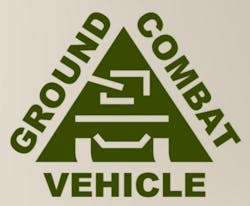Industry teams win $889.6 million in technology development contracts under U.S. Army Ground Combat Vehicle program
The General Dynamics-led team is focused on delivering an affordable ground combat vehicle that provides not only optimal soldier protection and operational effectiveness, but also the growth potential necessary to adapt the GCV IFV platform to the varied and evolving conditions of combat, describes Steve Schultz, vice president of the Ground Combat Vehicle Program for General Dynamics Land Systems. “Our design draws on affordable, mature technologies to provide protection, capacity for a nine-soldier squad, network interoperability, mobility, and lethality that is unmatched by any existing infantry fighting vehicle.”
This industry team will, during the 24-month GCV TD phase, complete the preliminary GCV design and deliver the Rocket Propelled Grenade (RPG) Protection Subsystem Prototype, the Mine Blast Subsystem Prototype Test Article, technical documentation, and associated data.
General Dynamics Land Systems in Sterling Heights, Mich., and Lima, Ohio, serves as the prime contractor and is responsible for program management, vehicle design and integration, vehicle structure and chassis, squad and crew environments, and integrated survivability and safety. Lockheed Martin in Grand Prairie, Texas, is responsible for the turret, lethal and non-lethal effects, and embedded training, whereas Raytheon in McKinney and Plano, Texas, will deliver the RPG protection system, indirect-vision, and sensor integration. Tognum America in Detroit, Mich., Aiken, S.C., and Friedrichshafen, Germany, will provide the power pack, including the engine, transmission, and generator. General Dynamics C4 Systems in Scottsdale, Ariz., Taunton, Mass., and Fort Wayne, Ind., leads the network and communications integrated product team, and is responsible for network integration, communications, computing, and information assurance.
BAE Systems, serving as prime contractor under its GCV contract, leads the overall program management, systems integration, vehicle design, structure, logistical support, and readiness and sustainment of the platform. BAE Systems officials assembled an industry team to work on the contract. Northrop Grumman in Linthicum , Md., serves as the command, control, communications, computers, intelligence, surveillance, and reconnaissance (C4ISR) lead. QinetiQ in McLean, Va., will provide the E-X-Drive component of the vehicle’s hybrid electric drive propulsion system. iRobot Corp. in Bedford, Mass., serving as the unmanned ground vehicle integrator, will enhance future autonomous operations. MTU in Detroit will deliver the GCV’s engine and power generation, whereas Saft in Valdosta, Ga., will provide the battery and energy storage system.
“Advancing to this next phase in the competition brings us one step closer to fielding a vehicle for our soldiers that is affordable, provides for maximum force protection and is built to accommodate future technological enhancements,” says Mark Signorelli, vice president and general manager of Weapon Systems at BAE Systems.
The BAE Systems-Northrop Grumman vehicle is designed with an adaptive platform, providing the ability to bring more survivability, mobility, and versatility to the Army and to scale protection to meet the demands various missions.
Work under the technology development phase will be performed at BAE Systems and Northrop Grumman sites in Sterling Heights and Troy, Mich.; Santa Clara and Carson, Calif.; York, Pa.; Minneapolis, Minn.; and Huntsville, Ala.
